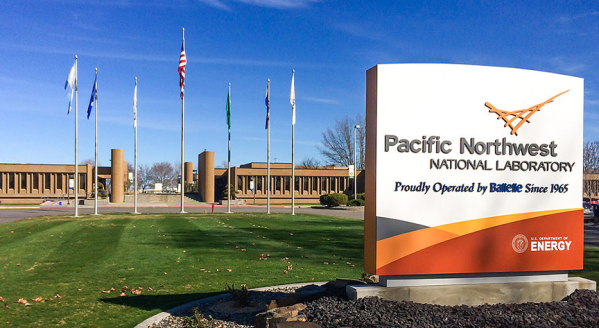 Tim Solms
Tim SolmsTim Solms, the general manager of Microsoft’s Department of Defense business, recently sat down with FedScoop Radio to share his insights into trends going on inside the department.
FedScoop: Well, I figure there is never a bad time to talk about DOD. There is always tons of stuff going on, but I guess an easy place to start, can you just talk a little bit about some of the big projects Microsoft is doing right now with the Department of Defense?
Solms: Sure, and you’re right. It is a busy time both for us and the DOD, but I get asked that question a lot, and the first thing that really comes to my mind really has to do around the cloud and first amongst that across the Department of Defense right now is DISA.
We’re seeing sort of a consolidation around DISA as service provider and their cloud and hosted base opportunities are probably the biggest thing that we’re working on.
So, across the defense community the interest in the private cloud options continues to be paramount due to the sensitivity of the data, and many of the customers want to be able to host their own cloud like DISA has done and is doing right now, currently enabling the Department of Defense. The Army’s the first to come there to use centralized email in a hosted cloud leveraging the Microsoft hosted exchange.
And the defense agencies, as they evaluate the sensitivity of their data, as they choose the right solution to align with their risk, tend to look back to the different providers that bring that capability forward. But the DISA model is the one that we are really following right now.
In Microsoft, we have an executive sponsor for our DOD Business, Mr. Kurt DelBene. He runs the office business side, and he gets to talk regularly with Lt. General Hawkins, DISA’s director. We also have our account mangers that really work from the bottom up. It keeps us, it gives us the ability to really stay laser focused on helping DISA chart their path for the cloud for the cloud for Department of Defense. And, we’ve got some other things we are working on, too.
One of the biggest and most exciting recently was a contract that was recently awarded by the Navy and Marine Corps through the Department of the Navy, which is consolidating over 25 different Microsoft contracts across the Navy and Marine Corps down to a single one.
They really took this opportunity to double down their investment in Microsoft as their platform of choice. They will able to select some new capabilities and methods of collaboration through Microsoft Link and through the Microsoft enterprise client access licenses. So now their service members are going to have new ways to connect from anywhere across any device.
They’re also, one of the major things they did in their private clause retainerization, was to select system center as their client management. The Navy’s really doing absolutely fantastic work with this on their infrastructure side. So, there are also two big solution areas that I’m seeing across the DOD, and you won’t be surprised by this one, but the first of those is really Windows 7, which we continue to an increased rate of migration to Windows 7. The Air Force, as of about three months ago, was the largest migration to Windows 7 in the world. And then, along with agencies like the Defense Logistics Agency, and really all the services in Co-Comms, are continuing to make big batches to their Windows 7 migration.
With that said, we are able to work with them through some of their selected groups as Windows 8 is on the horizon to help them get a quick look at that and begin that certification process. The other side of the solutions space is really Microsoft Dynamics. And with Microsoft Dynamics CRM we have multiple divisions across the Department of Defense that are using that technology to do things like logistics tracking, task management and find other lines of business efficiencies.
FedScoop: What are the biggest trends you are seeing right now in the DOD space when it comes to federal IT in the work you do?
Solms: Well, a highly transformative time within the DOD, and with that comes a lot of opportunities and risk as well but the real trends we are seeing is that they are moving to a much smaller, nimbler force. A more informed boots on the ground person, and when you look at those soldiers and the requirements that they have to be productive from any location and connect in a secure and redundant manner, that is big enough in and of itself but when you say they have got to be able to do that from any device that adds some additional complexity to the situation.
The other side of that that we are really seeing is it’s a challenging budget time. The environment is extremely tight for the DOD, and those leaders are looking for what are the next ways that technology, where they can drive cost out of what they are doing, but at the same time bring in efficiencies and security improvements so they can help accomplish their mission. Now, in terms of how we’re seeing sort of the federal trends and how those are shaping DOD I look at Mr.VanRoekel, the federal CIO’s “shared first” approach.
Very relevant in just asking those agencies that are out their spending money to look where they have already made their investments. That works well for us given that fact that we have a high level of investment across Microsoft but what I make sure our folks are doing is ensure that they have the full visibility to what they own and how to fully utilize and take advantage of that. So really anything like shared services, cloud computing, virtualization, getting maximum utilization there while they eliminate wasteful and duplicative IT expenditures.
Another big trend we’re certainly seeing is around cybersecurity. As other places get more restricted, cybersecurity becomes a much larger umbrella over all the things that are being done across the federal government and the Department of Defense.
The 21st century battlefield is going to be extremely different from what we have seen previously, but the ship really is moving towards cyberspace, and we are investing here, too. We have a deep expertise within our team, and we have been able to use our collaborative relationship with the Department of Defense over several decades to make sure we bring in the right information for and using that to help them with their solutions to go after the biggest cyber threats. Finally, I have to say that the big data is the next real trend that I’m seeing across the DOD.
Data growth is continuing its explosive in its rate we’re seeing that the total amount of digital information is going 10x every five years. This created a challenge for the IT community, but also an opportunity for citizens in government to gain insight from that data.
FedScoop: It’s interesting a lot of the things you are saying I hear from a lot of government executives. Either if I do an interview with them or if I’m out at a conference and hear them speak, there are always a ton of buzz words out there you know like cloud computing, mobility. Of the ones you mentioned, which ones do you think are the most important and which ones are kind of at the top of mind for you?
Solms: I’m hearing the same thing, but to me what stands out the most and two great areas to start are really around mobility and cloud computing. In mobility, we saw recently that the DOD released its mobility strategy and that provides a little different way of looking at mobility and trying to make that as encompassing as possible. But, this is our time in the industry to support that strategy in the most meaningful way.
Microsoft is working to ensure that we have specialties in those areas of mobility, but I’m also looking at mobility as information and data mobility. I’m looking at license mobility internal to the Department of Defense and not only ensuring that we have a mobile soldier, a mobile fighting force, but also that that information and those investments that they’ve made remain mobile inside the Department of Defense as well.
So, inside Microsoft, our mobility approach involves managing mobility, mobile device management, information management, employing mobile solutions across that bring your own device environment and ensuring that we can openly collaborate across agencies and across devices.
That information flow has to really span the entire Department of Defense and others that will show up in support of the Department of Defense. Whether its federal government or whether it’s NGO’s in support of disasters. If you look at mobility in a core portfolio of our solutions versus being just an additional thing for us to manage, we recognize that for our own mobile employees inside Microsoft and for federal employees alike, our portfolio needs to recognize that for and ensure that it’s components are all natively enabled for mobility.
When I say that I want to make sure that I highlight that, all the components of the enterprise have to be optimized to work interactively and together, and that’s exactly what we’re doing in our mobile environment. For example, inside Outlook we’ve been enabling secure remote connections natively for over a decade now.
That gives us information rights management and that prevents agency information from being read by unauthorized viewers. Whether that’s from a tablet device or for a mobile computer or a handheld or a smart phone that’s enabled and active. If you look at office web applications that gives a browser cloud version of those industry leading collaboration suites that have been used by the DOD for decades and that allows anybody to leverage that regardless of their device.
This is a feature that agencies already commonly own that are part of their Office 2010 investment, but something that also we’ve been able to serve up is a hosting variety of ways to give them that mobility.
Over on the cloud side, we believe that we’re really in our best position here to help the agencies get a comprehensive look at their IT infrastructures as they are seeking to improve and move their workloads to the cloud. The Department of Defense has a lot of complex enterprises, many of those responsible for managing and securing extremely sensitive data.
There’s a work in progress right now to reduce those number of data centers which means that information has got to, while it remains active and it remains accessible, it has to be able to move to a more centralized environment. Because so many of those agencies and segments of the Department of Defense are reliant on Microsoft productivity and collaboration tools, we’re in talks with or in the process with many of them to help their environments move to the cloud.
Really, when you look from infrastructure as a service down to software as a service we see the Department of Defense as starting the course towards multiple workloads in the cloud. It’s not just managing emails. It’s storage, collaboration, big data, analysis and data center consolidation.
We talk about cloud, and the DOD has to talk about private cloud, because it really is a key piece that’s often overlooked. Virtualization is an essential tool that the federal agencies are using to meet the presidential mandates and migrate government operations into the cloud and, for many workloads, the government agencies are going to adopt the private cloud more readily than the public cloud. It’s just a part of the security that’s always been what the Department of Defense does for their IT and we know that cloud computing is not a one size fits all.
That’s why we think the Microsoft offerings are attractive to customers, with an offering and certified offerings in public cloud, private, hybrid and most recently our government community cloud that’s reserved for our government organizations only. But the main message is that DOD agencies, they must evaluate the sensitivity of their data and choose an option or options that align mostly to their risk model and their security policy.
FedScoop: I always like to ask this of government executives kind of in the know like you. Are there any stories in the DOD side of federal IT that people aren’t talking about but should be?
Solms: I appreciate you asking. We are looking at couple things that we are able to do inside Microsoft that are unique. We spend a lot of time doing investing and citizenship around the DOD and, with folks that support the DOD user, but things that we are doing on the technology side that are I think important to us support the level of innovation that’s going on.
It’s absolutely tremendous. The Department of Defense is under extreme pressure to change. They’re answering the question now, “How are you going to do things differently?” Everything’s changing. I like to take us back to the beginning of World War II when they turned to Dwight Eisenhower and they said, “We know we’re going to war. We know we’re going to need a large army but we don’t have it. Let’s go and build it.”
There are no rules out there right now to define the level of change and the level of innovation that’s going to be in support of that change moving forward. It puts us in a position to really support our customer. So, when I look at things that we’re doing right now, outside of the core normal IT solutions we’re bring forward, we’re really focusing a couple areas around emerging technology and R&D. One thing, as a former attack helicopter pilot, that I like is really looking at what we’re doing from a natural user interface, focus on what we’re doing from X-Box Kinect technology. Last month, the Army released it’s solicitation, and we’ve seen folks using the Kinect technology to using gesture technology inside the cockpit. It allows the pilot to use gestures to both bring the cockpit related systems together and to do tracking externally.
We have a room-based and area-based computing, and that really has the potential to transform military life in a variety of ways. This is enabling personnel to control technology and technological resources using their gestures and voice recognition better than a keyboarded mouse. We’re doing things across telemedicine and physical therapy, working with wounded warriors and folks with traumatic brain injuries as a part of their physical therapy and that NUI holds really an incredible value for them.
It’s low-cost and easily available, and they are able to deliver out to a broad spectrum of patients. We’re using some of our link technology, and we’re using some of our Skype technology to help connect distant soldiers, family members, sailors, airmen, marines back to medical resources, psychological resources in support and help of diagnosing post-traumatic stress or providing therapy in those situations.
Those are some things that we’re doing a little bit differently that are helping that customer in support of their mission, but helping those individual families and service members as they’re supporting the mission as well.






